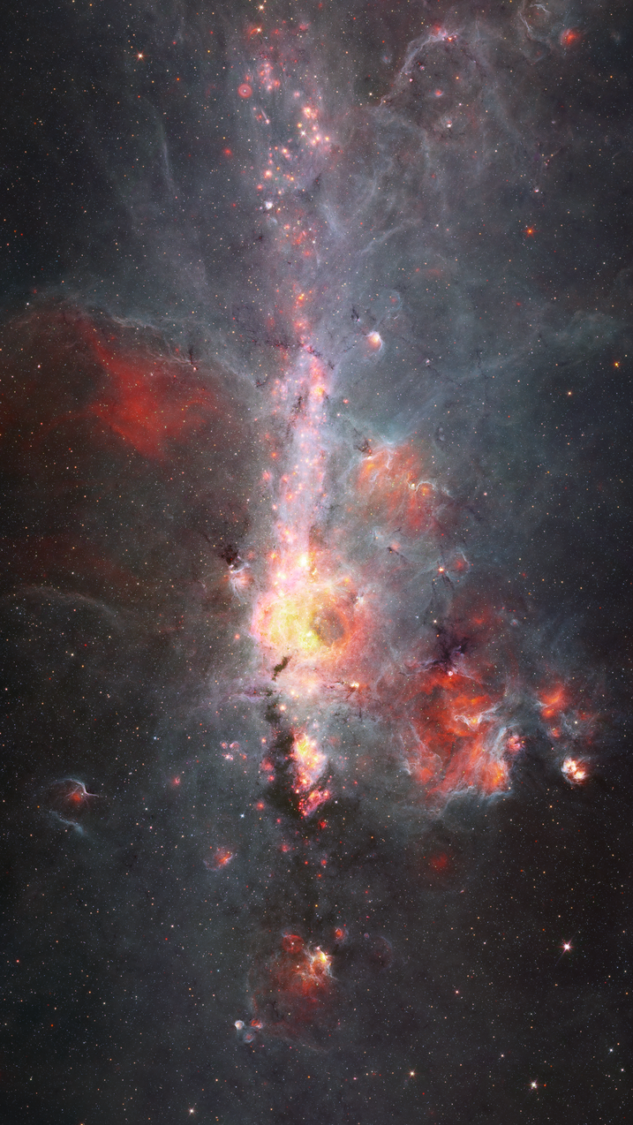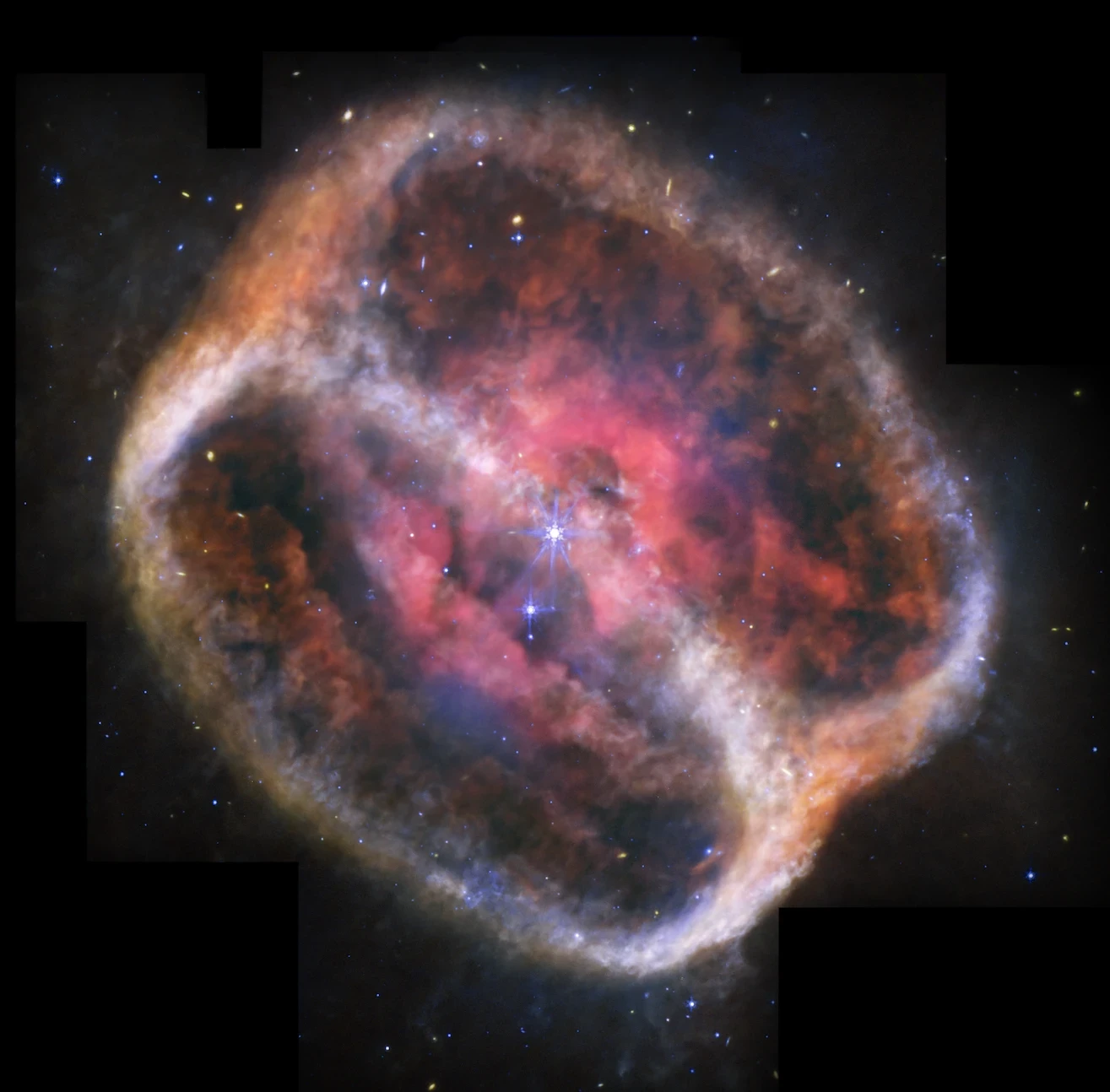Luminiferous ether was all the rage for physicists, for a very long time. Isaac Newton was the first to have thought up the idea of the existence of an all-pervading, invisible fluid, that he called ether. The ether engulfed all universe. It was rarer inside dense materials, and denser in the void. Newton, in a way, used this magical medium as a crutch to lean on whenever his particle theory of light appeared to falter.

As time passed by, Newton’s particle theory of light eventually lost steam, especially when Thomas Young famously demonstrated the light’s wave nature. Yet, the concept of ether persisted to haunt the physicists minds. In fact, the wave theory of light had made the existence of the ether even more necessary; after all, waves need a medium to travel through. Since light travels to Earth from distant stars and galaxies, the ether had to exist everywhere, in the intergalactic and the interstellar space as well. Besides being a transporter of light, the ether had to be invisible, mass-less, and at the same time extremely rigid. What was a desperate attempt by Newton to explain his faulty theory of light, had gradually turned into a miserable, self-contradicting and yet totally indispensable entity.
In the mid 19th century, James Maxwell, who’d reinforced the wave nature of light with his electromagnetic theory, suggested that the motion of the earth through the ether must be detectable with optical experiments. And here came forward the American experimenter Albert Michelson, who designed an exceptional experiment which elegantly laid the ether to rest, finally. It was the evidence for the non-existence of ether put forth by Michelson’s interferometer experiments along with the boldness of Einstein who simply assumed that ether isn’t necessary for light to travel through, that laid the foundation for the revolutionary theory of special relativity. And history, in a way repeated, 100 years later, when the model of Michelson’s interferometer (used in LIGO) was the one that proved right a result of Einstein’s General theory of relativity - the existence of the gravitational waves.
In what follows, we present the working of the Michelson interferometer, with a not-very-rigorous-approach (i.e., in the layperson language). For a more detailed account of the experiment, you may count on our other articles in the Optics section.
A simple sine wave
We make use of an extremely simplistic model of light. Imagine a light wave as a simple sine wave, as shown below. Note that this viewpoint isn’t completely outlandish, since the true nature of light is again a sinusoidal variation of electric and magnetic fields. We here dispense with the details of the interactions of the electromagnetic fields with matter, etc. Our light wave is a sine wave, which has all the general attributes of a wave - frequency, wavelength, velocity, etc, with which we assume your understanding (at least on an intuitive ground).
Wave behaviour
We now state a fewresults with regard to the general behavior of the sinusoidal light wave:
When light travelling in a vacuum enters a desner medium such as water, it slows down and we say its wavelength shrinks.
Let’s call the wavelength of our light wave when in vacuum, . On entering the denser medium, its wavelength reduces. This is a consequence of the slowing down of the wave in the dense medium. Mathematically, we say that the wavelength shrinks according to,
where is the “refractive index” of the dense medium and is a measure of the medium’s effect on the light wave traveling in it. Crudely, larger represents a denser medium.
When the light wave emerges out of the denser medium, into the vacuum, it restores its wavelength back. The passage through the dense medium does not cause any irreversible change in the wave. All the changes in the wavelength, speed, etc that had occurred when the wave had entered the medium, are undone when the wave exits the medium.
When a light wave is reflected off the surface of a denser medium, its speed and wavelength remain unaltered; however, its “phase” reverses. In simple words, a phase reversal means that if it was a peak that bumped into the surface, a valley reflects back; and vice versa.
If two light waves overlap (combine) in space, they are said to interfere. If the two waves overlap so that the peaks of one coincide with the peaks of the other, the waves interfere constructively - the peaks add up, and so do the valleys; the resultant wave is twice more intense than the individual waves. If however, the overlapping is such that the peaks of one wave coincide with the valleys of the other, destructive interference occurs - the waves simply cancel one another, and the result is a no-wave (zero intensity). Any other kind of overlapping lies between these two extremities, and the resultant wave intensity will be somewhere between zero and twice that of the combining waves.
The Interferometer
With this basic understanding of how light waves travel through media, we can move on to the crux of the matter - the Michelson interferometer. The set up is as you can see in the image below. A light source that emits light waves of a single wavelength is used. For simplicity, we consider a narrow beam of laser emitted by the source. This laser beam is made incident on a “half silvered” glass plate. This plate is like a semi-transparent mirror - it reflects half the light falling on it, and lets the other half, pass through. It is placed at an angle so that the part of the beam that gets reflected off it, travels toward the mirror which is placed with its polished face facing downwards. And the other part of the incident beam that passes through the plate without being reflected, travels toward the mirror . Now, both the beams traveling along the arms of the interferometer get reflected (completely) by the mirrors and , and head back toward the half silvered plate . This time, the beam returning from the mirror is let through by , while the one coming from is reflected downwards. Ultimately, the severed beam reunites - the beams interfere. We now need to look at the conditions under which the beams interfere constructively, and what factors lead to destructive interference.
For ease of understanding we assume the the plate is very thin. Light beams passing through it go unaffected. The mirrors and are placed so that the arm lengths are precisely equal (). The two beams, therefore, travel equal distances and undergo two reflections, before the reunion. Both the beams undergo a phase reversal when reflected at the mirrors. And so, the recombining waves are completely in phase, just as they were when just emitted by the source . There is constructive interference and the eye observes an intense wave.
We now try to fiddle with the apparatus (of what good is it otherwise?!). Let’s move the mirror farther away (upwards) through a distance of exactly one wavelength, taking care not to disturb its orientation (leaving as it was). In doing so, all we’ve done is accommodate one extra wavelength of the wave traveling along . This doesn’t change anything of how the wave reflects off . At this displaced position of , we still have constructive interference at the eye, . Taking hint from our understanding of how light waves reflect off mirrors, we now cleverly move the mirror through half a wavelength. The consequence is that if, before moving , a peak of the light wave bumped into , reflecting a valley; now, after the displacement, a valley bumps into the mirror, reflecting a peak. A phase reversal has occurred. And since the wave is continuous, with a constant wavelength, the phase reversal happens all along the wave in the arm , down to the eye, . With all the peaks replaced by valleys and vice versa, in the beam of arm, , and with the beam of remaining unaltered, we have the set up exactly how it is needed for destructive interference to happen at the eye.
You could as well have moved in the opposite direction (downwards), we’d get the same result. All that matters is not in what direction the mirror is moved, but by how much it is moved.
Displacements through distances , , ,..., yield constructive interference, while displacements of
,..., cause destructive interference. Also, you could as well have left unaltered and moved back and forth - the results would be identical to the previous case.
Alright, you get it - displacement of either mirrors through half wavelength (or its multiples) turns a bright spot at the eye, into a dark one. So what? you might ask. The answer to this question isn’t one. There are innumerable ways in which this interferometer can be used. And to understand most of them, you need to be aware of the concept of interference fringes (alternate dark and bright patterns formed due to destructive and constructive interference). We will explain this in much detail in our next article; but for now, you could get a crude idea of how this intereferometer can be used to measure the thicknesses of extremely thin materials. You just need to place the material in the path of either beams in or , which changes the relative phases of the interfering beams at the eye, causing a “fringe shift”. Observing the fringe shift, tells us of the extra wavelengths of the light that were accommodated in either arm of the interferometer due to the introduction of the thin material, using equation (1). Whatever length we obtain by multiplying the number of those extra wavelengths with the value of the wavelength, is the thickness of our material.
Detecting the waves
Of course, the one application you might be eagerly waiting to be acknowledged here, is that in the detection of gravitational waves. A gravitational wave is essentially a rhythmic distortion of spacetime - it stretches and squishes the space through which it travels. If we were to lay down the Michelson interferometer on flat ground, the gravitational waves passing normal to the ground (and which aren’t too feeble) would stretch and squeeze the entire apparatus - it would appear as the rhythmic process in which say, first the arm stretches with simultaneous contraction of the arm ; followed by a contraction of and elongation of ; and so on. As we’ve seen if the arm length of either arms changes by even half a wavelength (to be precise, even a quarter wavelength) of the light used, fringes shift, and gravitational waves would be detected. To appreciate how small a change this is, and therefore how feeble a gravitational wave the interferometer can detect, consider the fact that the wavelength of the laser beam used at LIGO (whose arm lengths are about ) was 1064 nanometers - that is roughly one-millionth of a meter. So, if a gravitational wave passing through the interferometer, is as feeble as to cause a change in the arm length by a mere meters, it would be detected (but mind you, the advanced interferometer at LIGO, with a few more modifications, is fine tuned to detect a trillion times smaller change in arm length than this). And that is what (more or less) happened last year September. The confirmation of the detection by the LIGO team, last week, spurred the scientific community and literally opened up a new gateway to see the Universe more intimately than ever.
We’ll use the working of the interferometer explained here, and discuss the original purpose for which Michelson had designed the experiment (to detect the ether), in our next article; along with the details of its other applications.

